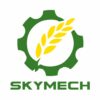Introduction
In the manufacturing industry, choosing the right forging process is essential to produce high-quality components that meet specific performance requirements. This article will explore the differences, advantages and disadvantages of cold forging, warm forging and hot forging, and provide insights into their respective applications. We use an example to illustrate which process is best suited for FAE mulcher blades, a key component used in forestry and agricultural machinery.
| Process | Temperature | Mold Requirements | Product Characteristics | Applicable Materials |
| Cold Forging | Normal Temperature | High-pressure resistant, uses high-strength alloy steel, high precision and smoothness required | Good surface quality, high dimensional accuracy, suitable for manufacturing complex small parts, increased product strength and hardness | For ductile materials like low-carbon steel, copper, aluminum, and their alloys; not suitable for high-hardness, |
| Warm Forging | 200 – 800°C | Uses hot work die steel, requires good thermal fatigue resistance and high-temperature strength, complex structure with cooling system | Dimensional accuracy and surface quality are between cold forging and hot forging, uniform internal stress distribution, can manufacture complex parts, retains material strengthening effect, good mechanical properties | For materials that are difficult to deform in a cold state and prone to cracking; difficult to control dimensional accuracy in hot forging, |
| Hot Forging | Around 800 – 1200°C | Uses hot work die steel, high-temperature and high-pressure resistance, requires heat dissipation and demolding considerations, mold life may be shorter | Complex shapes, relatively lower dimensional accuracy, surface quality not as good as cold and warm forging, improves internal structure, refines grains, enhances comprehensive performance | Suitable for various metal materials, especially large and complex-shaped parts or hard-to-process materials like hig |
Cold Forging
Principle
The basic principle of cold forging is to use the plastic deformation ability of metal to apply pressure to the metal through the die to make it deform without destroying the metal crystal
structure.

Advantages
- High efficiency: Cold forging has high efficiency, suitable for mass production and large quantity orders
- Excellent surface finish: Cold forging produces parts with high-quality surface finish and precise dimensions.
- Material utilization: The process provides high material utilization, reducing waste and cost.
Disadvantages
- Limited to small parts: Cold forging is usually limited to small-sized parts.
- High material stress: The high pressure used in cold forging can cause material stress and potential cracking, especially in hard materials, which can increase product safety risks. In addition, materials with high hardness will increase the wear of the mold. Of course, better materials can be purchased to make molds, which will increase the cost.
Application
Cold forging is ideal for manufacturing small precision parts, such as:
- Bolts and nuts
- Rivets
- Pinions
Warm forging
Principle
Warm forging is a kind of plastic forming process with little cutting developed on the basis of cold forging, which has the advantages of both cold forging and hot forging to a certain extent.

Advantages
- Reduce oxidation: Lower temperatures can reduce oxidation and decarburization of materials.
- Energy efficiency: Although warm forging consumes more energy than cold forging, it can reduce more energy consumption than hot forging.
- Improve surface quality: Compared with hot forging, this process can achieve better surface quality.
Disadvantages
- Initial investment: Specialized equipment and temperature control systems are required, resulting in higher initial costs.
- Technical complexity: The process requires precise control and skilled operation.
Applications
Warm forging is suitable for parts that require high strength and good surface finish, such as:
- Aerospace parts
- Automotiveparts(like drive shafts, gears)
- Land clearing cutting tool
Hot forging
Principles
Hot forging is usually carried out at temperatures above 950°C. At these high temperatures, metals exhibit excellent plasticity, allowing significant deformation and the production of complex shapes.

Advantages
- High formability: metals can be easily formed into complex shapes.
- Improved mechanical properties: High temperature processes enhance the mechanical properties of forged parts.
- Suitable for large parts: Ideal for manufacturing large and heavy parts.
Disadvantages
- High energy consumption: Hot forging requires a lot of energy for heating.
- Surface oxidation: High temperatures can cause surface oxidation and scaling, requiring additional finishing processes.
- Lower precision: Hot forged parts may require further processing to achieve precise dimensions.
Applications
Hot forging is used for large, complex parts such as
- Engine components (like connecting rodscrank shafts)
- Construction engineering machinery parts
- Heavy gears
Case Study: FAE Vegetation mulcher blades

FAE Vegetation mulcher blades are heavy-duty components used in forestry and agricultural machinery for cutting and grinding vegetation. Given their demanding working environment, the blades require high strength, excellent toughness, and superior wear resistance.
Best Forging Process: Hot Forging
Hot forging is the most suitable process for manufacturing FAE Vegetation mulcher blades. Here are the reasons:
- High Strength and Toughness: Hot forging enhances the mechanical properties of the blade, making it durable and able to withstand high impact forces.
- Complex Shape Capability: The process allows for the creation of complex shapes and detailed features required for Vegetation mulcher blades.
- Material Integrity: Hot forging improves the internal grain structure of the metal, improving the overall integrity and performance of the blade.
Conclusion
Choosing the right forging process is critical to producing high-quality parts that meet specific performance standards. Cold forging is ideal for small precision parts; warm forging provides a balance of precision and formability for medium-sized parts; and hot forging is best for large, complex parts that require superior mechanical properties.
For FAE mower blades, hot forging is the best choice because it provides the strength, toughness, and material integrity that ensures the blades perform effectively in harsh operating conditions.


